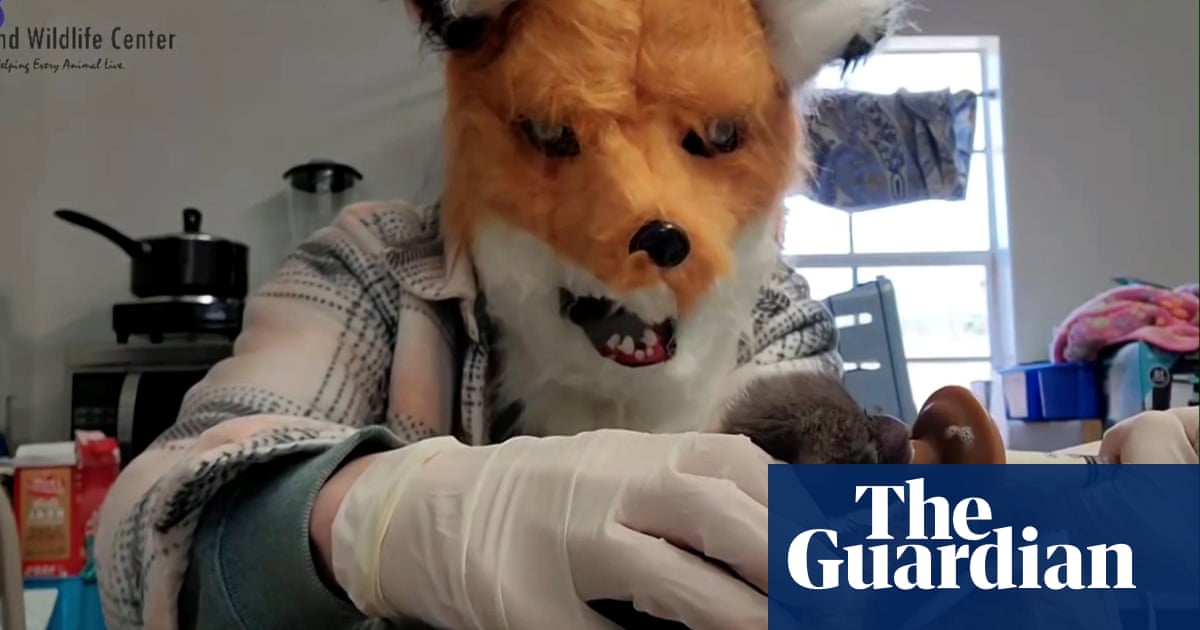
A Virginia wildlife center has figured out how to prevent abandoned newborn animals – specifically foxes – from imprinting on humans, doing so by wearing a giant fox mask while feeding the babies.
At a first glance, a video of the development looks like just another uncanny clip found on the internet. A person wearing a fox mask with beady eyes and a moveable mouth towers over a palm-sized, squirming creature, what looks like a newborn kitten, while feeding it with a teat-like tube.
And yet, as strange as it seems, it’s meant to demonstrate the careful handling young animals require when humans find them vulnerable in the wild.
The Richmond Wildlife Center, which posted the video, said it took in the female kit, the term for a baby fox, when she weighed 80g and her eyes were still sealed.
“We want the first things she sees to be other foxes even if we don’t have any actual adult or siblings to put her with,” the center wrote in a Facebook post on 6 March. The center asked followers for donations so it could purchase specific items to help the kit, including a “fox head mask on our wishlist that we can wear so she doesn’t see a human face when feeding”.
“This is critically important if we are going to get her wild. We need these items ASAP as her eyes will be opening in the coming days,” the center wrote in the post.
A donor came through, providing the center with the mask shown in the video.
In a post, the center wrote that young animals separated from their mother early are susceptible to imprinting on humans, or becoming attached to whatever the animal perceives as its early caretaker in life.
“It’s important to make sure that orphans that are raised in captivity do not become imprinted upon or habituated to humans,” the center said. “To prevent that, we minimize human sounds, create visual barriers, reduce handling, reduce multiple transfers among different facilities and wear masks for the species.”
Imprinting on humans could lead a young animal not to learn the necessary skills it needs to survive in the wild on its own. And if the animal becomes too comfortable around people, losing the natural fear wild animals have of humans, they could put themselves in dangerous situations more easily, like wandering on to roads or making them susceptible to being trapped and killed.
after newsletter promotion
In 2022, workers at a wildlife center in China wore full panda costumes while taking care of a baby panda, similarly to prevent the cub from becoming too used to humans.
When animal-specific costumes are not at hand, wildlife centers can also use protective gear like lab coats, gloves and darkened face masks when handling wild animals, a look animals won’t associate with people when they’re back in the wild.
The Richmond Wildlife Center first started posting about the fox kit to bring awareness to the proper handling of wild animals, especially those that are very young. Multiple people handled the kit with bare hands, as many believed she was a kitten when she was first found, the center wrote on Facebook on 1 March. The improper handling made them susceptible to rabies.
“Please tell everyone you know to wear proper handling protection when working with ANY mammal,” the center said. “More often than not, rabies does not look the way it is portrayed in the media and movies. In the majority of cases, the animal is not aggressive. They are quite the opposite. In fact, they are quite friendly, sweet, cute and cuddly.”
